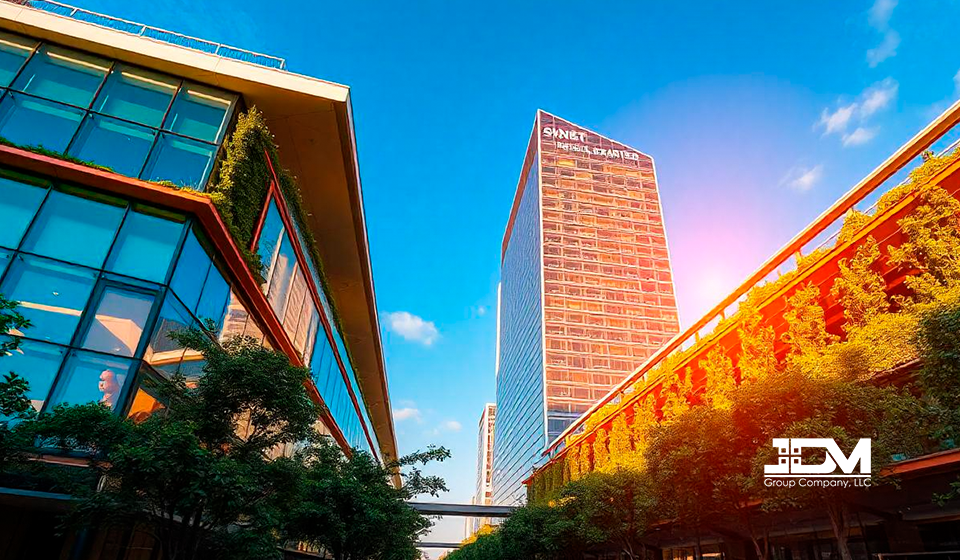Urbanization in Architecture 2024: Trends and Challenges

Architecture in 2024: Embracing Innovation and Sustainability
April 18, 2024
Construction in the US in 2024: Trends, Challenges, and Opportunities
May 13, 2024Urbanization is a global phenomenon that has radically transformed the landscape of cities in recent years. It is estimated that by 2050, 68% of the world’s population will live in urban areas. This accelerated growth presents both opportunities and challenges for architecture, which must adapt to the new needs of cities and their inhabitants.
Trends in urbanization in architecture 2024:
Compact and walkable cities: The trend towards more compact and walkable cities seeks to reduce dependence on cars and promote more sustainable modes of transport such as public transport, cycling and walking. This involves designing denser neighborhoods with narrower streets and more pleasant public spaces.
Multifunctional buildings: Multifunctional buildings combine different uses in the same space, such as housing, offices, shops, green spaces and cultural spaces. This allows for the optimization of land use and the creation of more dynamic and vibrant spaces.
Green and sustainable architecture: Green and sustainable architecture seeks to minimize the environmental impact of buildings, using recycled and locally sourced materials, reducing energy and water consumption, and promoting biodiversity.
Smart technologies: The integration of smart technologies into architecture allows for improved energy efficiency, security and comfort in buildings. This includes home automation systems, intelligent lighting and sensors that collect data on space usage.
Inclusive public spaces: Inclusive public spaces are designed to be accessible and enjoyed by everyone, regardless of age, physical condition or ability. This involves removing architectural barriers, creating safe play areas and incorporating natural elements.
Challenges of urbanization in architecture 2024:
Housing shortage: The growing demand for housing in cities, coupled with rising land costs, is creating a shortage of affordable housing. Architecture must seek innovative solutions to provide decent housing for all inhabitants.
Social inequality: Cities are often spaces of great social inequality, with marginalized areas and areas of high concentration of wealth. Architecture must contribute to reducing these inequalities and creating more just and inclusive cities.
Environmental impact: Urban growth generates a number of environmental problems, such as air pollution, waste generation and loss of green spaces. Architecture must contribute to mitigating these impacts and creating more sustainable cities.
Efficient urban management: Efficient urban management is essential to address the challenges of urbanization. Architecture must collaborate with other disciplines to develop sustainable and resilient urban plans.
Urbanization is a complex process that presents both opportunities and challenges for architecture. Architects of the 21st century must be prepared to face these challenges and design more sustainable, livable and equitable cities. Creativity, innovation and collaboration with other disciplines will be key to building a better urban future.



